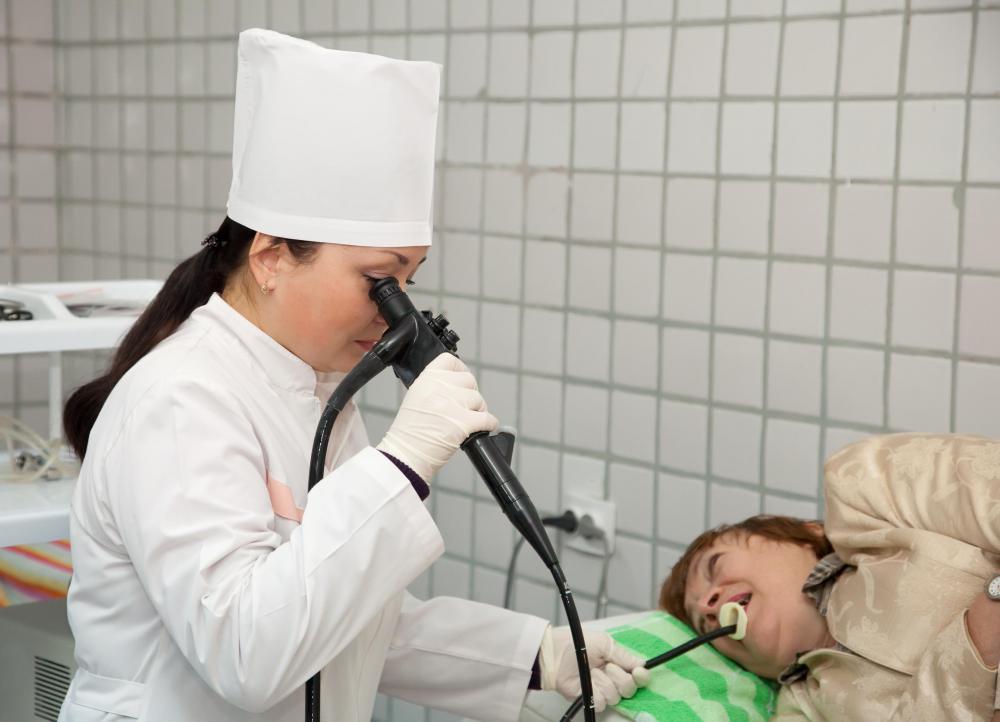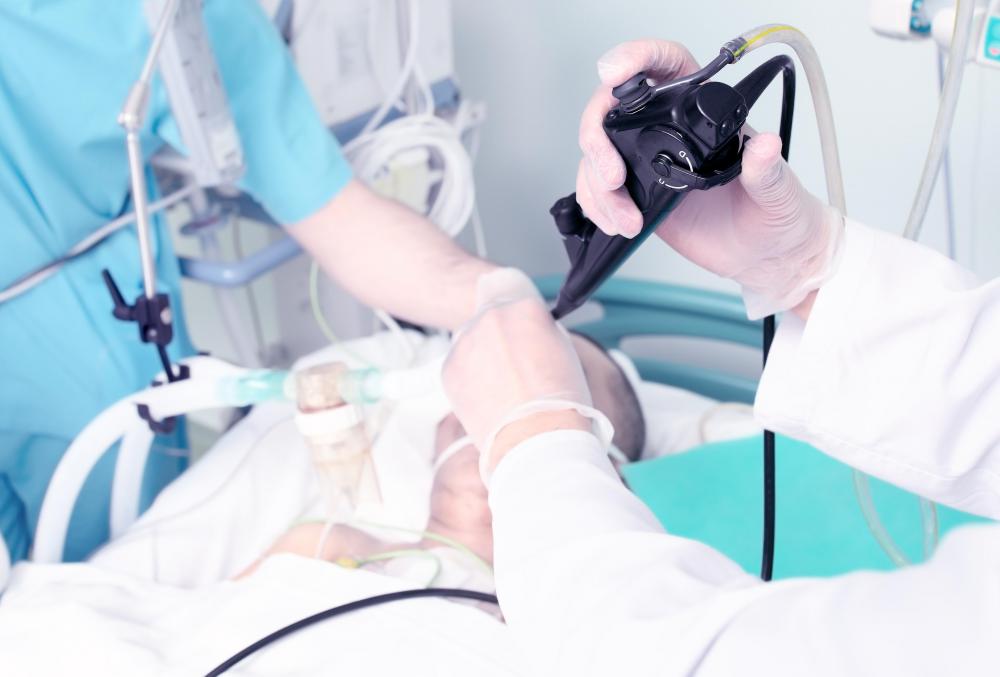At TheHealthBoard, we're committed to delivering accurate, trustworthy information. Our expert-authored content is rigorously fact-checked and sourced from credible authorities. Discover how we uphold the highest standards in providing you with reliable knowledge.
What is Intubation?
Intubation refers generally to inserting a flexible tube anywhere in the human body, but most people use it specifically to refer to tracheal intubation, which involves putting a down into someone's trachea to secure his or her airway. The procedure is often used in emergency medicine when a patient is having difficulty breathing, and it is also used during surgery to keep the airway open for the delivery of anesthetic drugs and oxygen. In addition, patients on mechanical ventilators will be intubated so that the ventilator can breathe for them. This can be a dangerous procedure when it is not performed properly, and training in intubation is usually quite extensive.
To perform a tracheal intubation, a doctor or emergency medical technician ideally uses a laryngoscope, a medical device which is inserted into the mouth to open the jaw. The laryngoscope also lets the doctor clearly see the patient's throat, ensuring that the tube is placed in the correct passage; if the procedure is performed improperly and the tube ends up in the esophagus, the results for the patient can be quite unpleasant and even deadly if not caught in time.

An intubation tube is slowly threaded into the throat, with a doctor requesting a smaller or larger size if needed. If the patient is at all conscious, he or she may fight the process, since it feels extremely unpleasant. Once the tube is in, it is secured, and it can be attached to a mechanical ventilator, anesthesia machine, or bag valve mask, also known as an ambu bag. An ambu bag can be manually manipulated to help the patient breathe.

When a tube is threaded through the nose into the airway, it is called nasotracheal intubation. In both cases, a doctor carefully listens to the patient's breath sounds to ensure that the tube is in the trachea, and to make sure that air is being supplied to both lungs. When the tube is removed, the procedure is known as extubation. Patients are extubated when they are feeling better, or when a surgery is over and the patient is ready to breathe on his or her own.

Intubation is also used for endoscopic procedures, procedures in which doctors look into the body with tools like cameras or medical devices which make visibility easier, like laryngoscopes. Endoscopy is used to diagnose various conditions all over the body, from the respiratory and gastrointestinal tracts to various organs in the abdomen. In order to perform endoscopy, a tube is inserted into the area of interest so that tools can be fed through it.
AS FEATURED ON:
AS FEATURED ON:













Discussion Comments
@kelly d: What probably occurred is that when using a laryngoscope to view the inside of your throat, it hit your teeth. We read about it and are told to avoid putting pressure on the teeth with the scope when trying to view the tracheal opening.
@kellyd: Talk to your doctor or hospital. Demand answers!
I just went through a double mastectomy. When I woke up two of my teeth were broken and a large piece of skin is missing leaving exposed bone in my mouth which has not heeled in two months. I am trying to figure out what machine could have done this to me during surgery. I can't find anything here that explains. How this could have happened?
Could someone elaborate for me?
Kelly
Post your comments